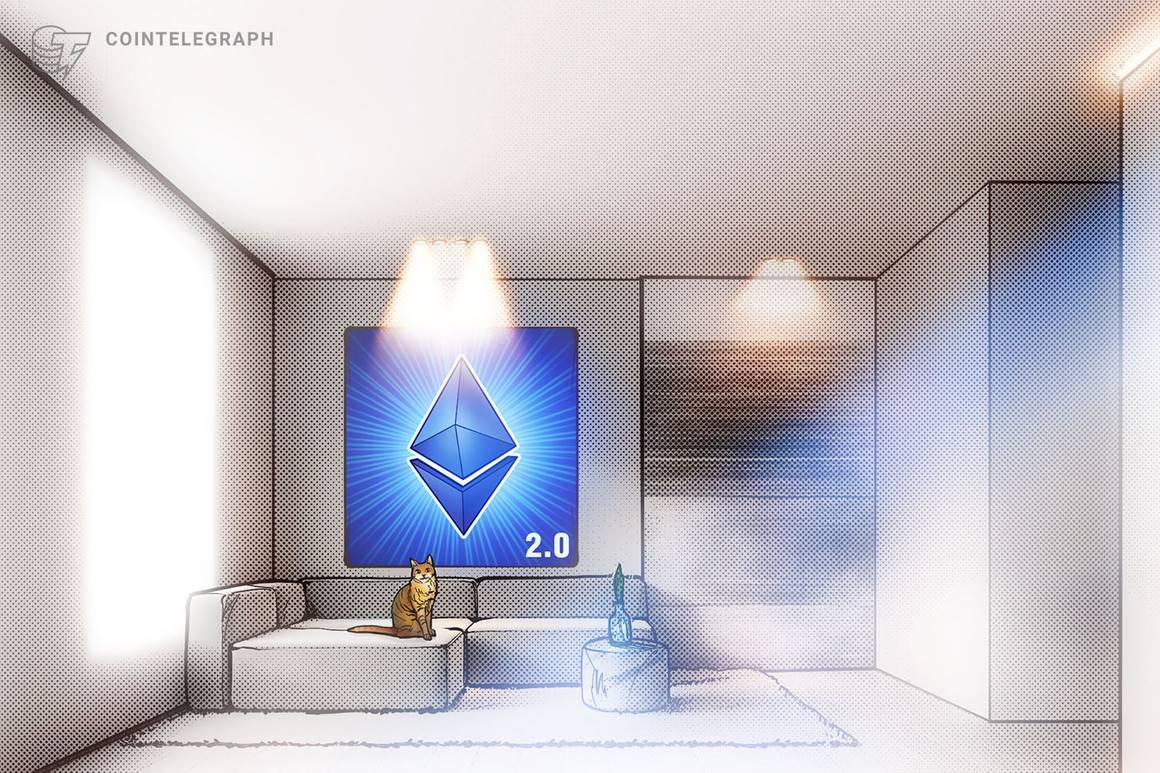
Ethereum’s long-awaited migration to a proof-of-stake (PoS) consensus mechanism, which has been pushed back time and time again, looks set to occur sometime in August — hopefully.
Preston Van Loon, a core developer of the Ethereum network, told attendees at the Permissionless conference that the transition, known as The Merge, would occur sometime in August if everything plays out according to plan.
Ethereum core Dev @preston_vanloon just said the eth merge is ready,they are now only testing, and expects the merge to happen in August. Packed room @Permissionless are excited about it. Great question @TrustlessState. Also on panel @drakefjustin pic.twitter.com/vX4beNatJ5
— Benjamin Cohen (benjicohen.eth) (@benjicohen421) May 19, 2022
Van Loon told the 5000 attendees that the team was looking to make the transition before the so-called “difficulty bomb” would degrade the network as scheduled:
“As far as we know, if everything goes to plan, August — it just makes sense. If we don’t have to move [the difficulty bomb], let’s do it as soon as we can.”
Echoing this sentiment was fellow Ethereum researcher Justin Drake stated that ensuring the Merge went ahead quickly was a top priority, sharing his “strong desire to make this happen before difficulty bomb in August.”
The “difficulty bomb” refers to the program coded into the Ethereum blockchain that intentionally slows down the network. It was designed to encourage the transition to PoS by making it more difficult for miners to stay behind on the proof-of-work (PoW) chain after The Merge.
On April 11, Ethereum developer Tim Beiko announced that The Merge had once again been delayed. Despite a successful “shadow fork test,” Beiko said that The Merge would not be implemented in June as expected. According to Beiko, developers need to act quickly to avoid the difficulty bomb, otherwise, they will need to introduce yet another update to delay the bomb:
“If client developers do not think they can deploy The Merge to mainnet before block times are slowed too much, it will need to be delayed again.”
The recommitment to the timeline comes in the wake of this week’s news the Ethereum network will see a “huge testing milestone,” with the Ropsten testnet Merge set to be conducted on June 8. The Ropsten testnet Merge will see the PoW test network combined with a new PoS consensus layer testnet. It will simulate what will happen once the actual Merge between Ethereum and the Beacon Chain finally takes place and it becomes a PoS network.
If The Merge is successfully implemented in August, the final landmark on the roadmap for Ethereum, formerly known as Eth2, is the sharded chains upgrade slated to go live in early 2023. Until then, however, the network will continue to utilize layer-2 networks like Polygon and Optimism to handle scalability and high transaction volumes.
Ethereum developers have maintained their expectations that the upcoming network upgrade, known as the Ethereum 2.0 or the Merge, would occur in August – assuming that everything goes to plan. Scheduled to go live on the Ethereum mainnet by August 2021, the Merge seeks to merge the current iteration of Ethereum with the Ethereum 2.0 blockchain.
The Merge marks a major milestone in the process of transitioning Ethereum to a proof-of-stake (PoS) system. Eth2, which began its rollout in December 2020, is a highly anticipated upgrade that will provide improved scalability, security, and sustainability to the network.
Ethereum Foundation researcher Danny Ryan, who’s in charge of the project implementation, reaffirmed his belief that the Merge would go live this August via a tweet on April 6. Ryan added that he’ll be “more vocal in the coming weeks on specific validator onboarding process and more.”
With the Merge, Ethereum will become the fastest PoS-based blockchain, allowing for much higher transaction throughput. It will also enable the world’s first decentralized computer, allowing developers to host secure and private applications. Furthermore, the Merge will enable Ethereum-based tokens to run on the Ethereum 2.0 blockchain.
Currently, the Ethereum network is handling around 20 transactions per second, or 20 KTPS (kilobytes per second). However, the Merge is expected to increase this figure significantly. In fact, with the use of “sharding” technology, Ethereum 2.0 could theoretically support up to a million transactions per second.
The Merge will bring a much-needed overhaul to the Ethereum network and make it more competitive in the cryptocurrency space. If the upgrade goes according to plan, we could see a more efficient and secure Ethereum by August.























